Recent Photos of the Comet 67P / Churyumov-Gerasimenko by Rosetta, the Spacecraft of the European Space Agency
Europe’s Rosetta spacecraft closed out a historic 4.9-billion-mile journey Friday with a slow-speed crash into the nucleus of comet 67P/Churyumov-Gerasimenko, the tiny world it has studied for the last two years, capturing some of the mission’s best science data to help unravel the inner workings of the comet. Confirmation of the crash landing arrived on Earth at 1119 GMT (7:19 a.m. EDT).
Just before settling to a soft crash landing Friday, the European Space Agency’s Rosetta spacecraft captured close-range images of comet 67P/Churyumov-Gerasimenko, peering into a stadium-sized pit and recording a final dataset to keep scientists busy long after the mission’s end.
The craft’s OSIRIS science camera took images throughout Rosetta’s descent and sent the data back to Earth in real-time.
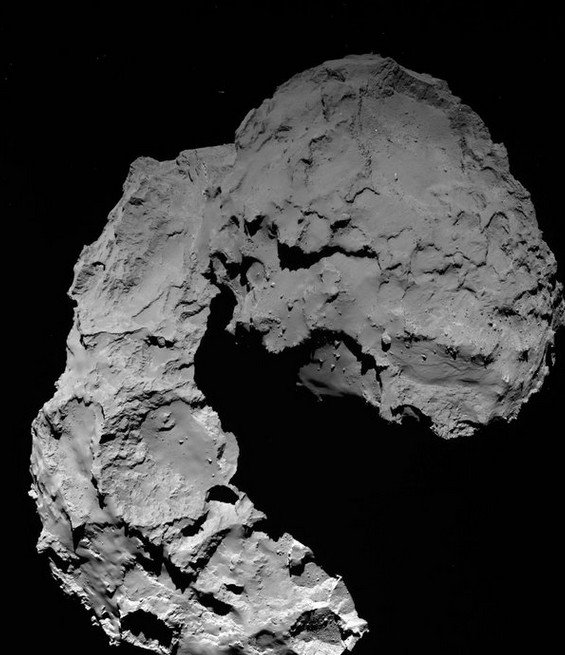
Rosetta’s OSIRIS wide-angle camera captured this shot of comet 67P/Churyumov-Gerasimenko at 1149 GMT (7:49 a.m. EDT) Thursday at a distance of 14.2 miles (22.9 kilometers) from the nucleus.
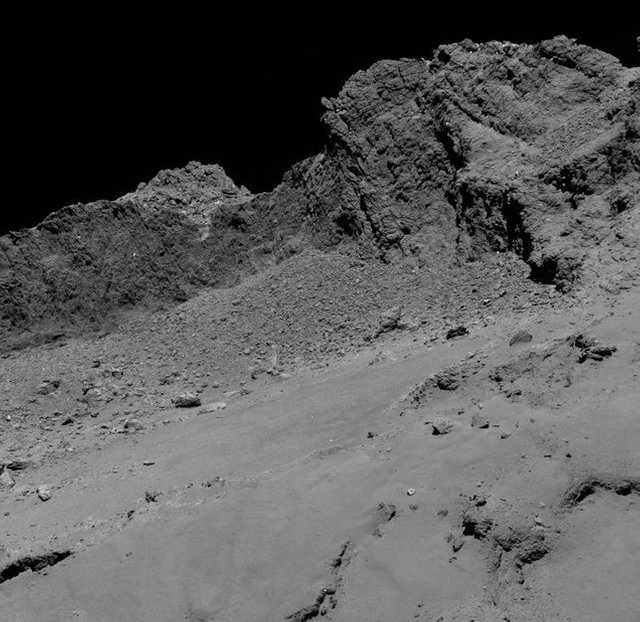
The OSIRIS camera’s narrow-angle camera took this picture of comet 67P/Churyumov-Gerasimenko at 0120 GMT on Sept. 30 (9:20 p.m. EDT on Sept. 29) at a distance of 10 miles (16 kilometers).
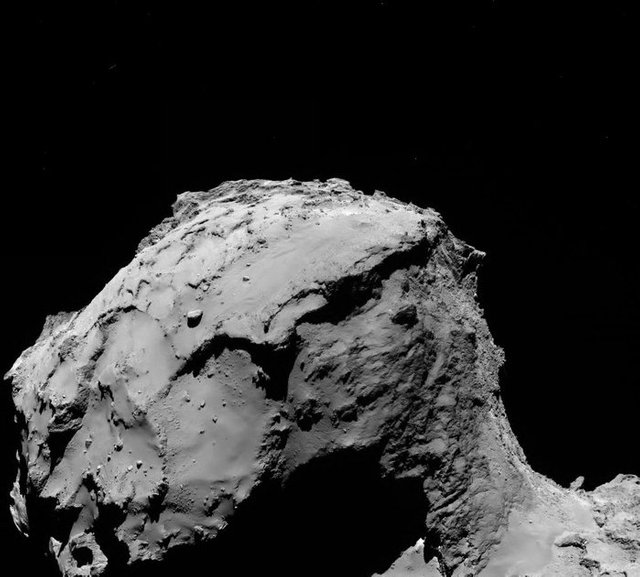
The OSIRIS wide-angle camera took this image of comet 67P/Churyumov-Gerasimenko at 0217 GMT on Sept. 30 (10:17 p.m. EDT on Sept. 29) at a range of 9.6 miles (15.5 kilometers). The field-of-view in this picture stretches about 2 miles (3.2 kilometers) across, and the resolution is 5.11 feet (1.56 meters) per pixel
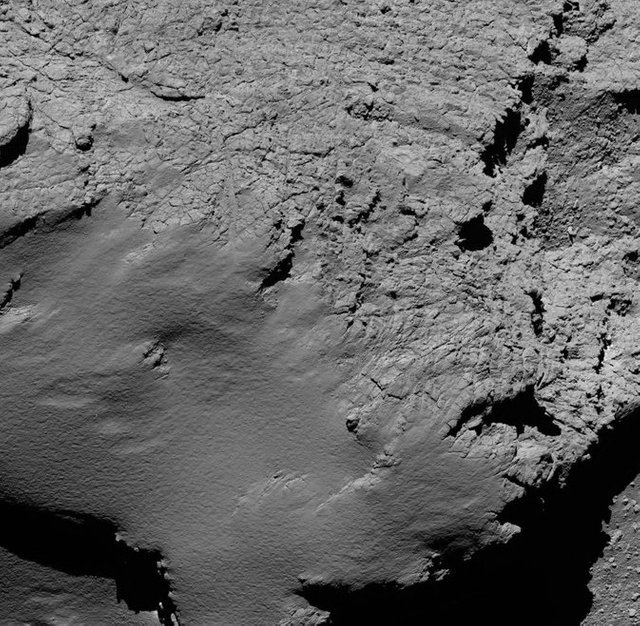
Rosetta’s OSIRIS narrow-angle camera captured this view of comet 67P/Churyumov-Gerasimenko from a distance of 5.5 miles (8.9 kilometers) at 0653 GMT (2:53 a.m. EDT) no Sept. 30. The field-of-view stretches nearly 1,150 feet (350 meters) across, and the resolution is 6.7 inches (17 centimeters) per pixel.
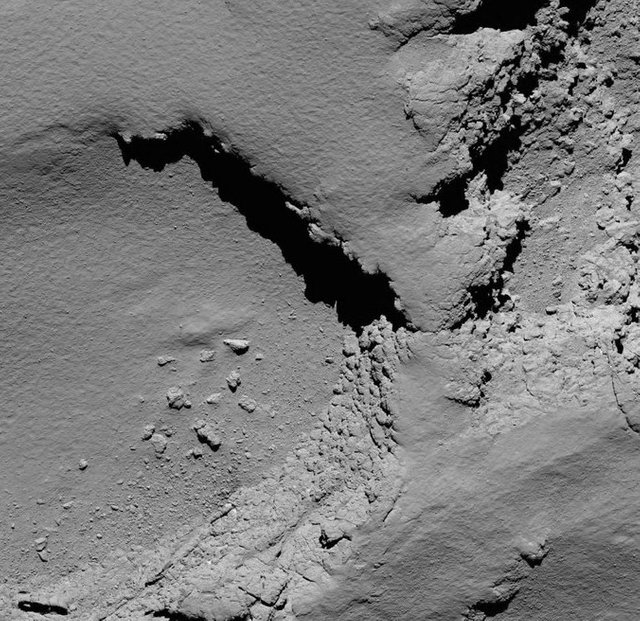
Rosetta’s OSIRIS narrow-angle camera captured this image of comet 67P/Churyumov-Gerasimenko from a distance of 3.6 miles (5.8 kilometers) at 0818 GMT (4:18 a.m. EDT) on Sept. 30. The field-of-view stretches about 740 feet (225 meters) across, and the resolution is about 4.3 inches (11 centimeters) per pixel.
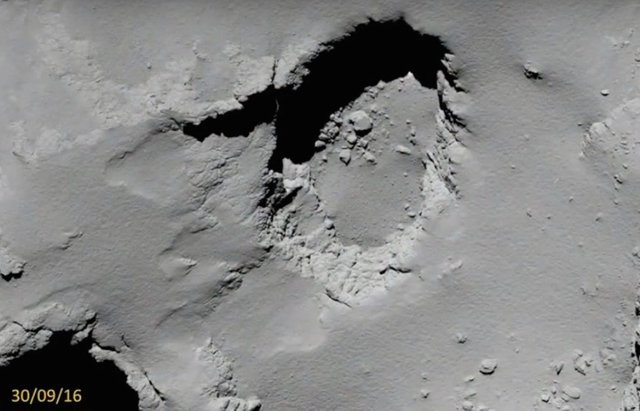
This view of the Deir el-Medina pit was captured by the OSIRIS wide-angle camera about 55 minutes before landing.
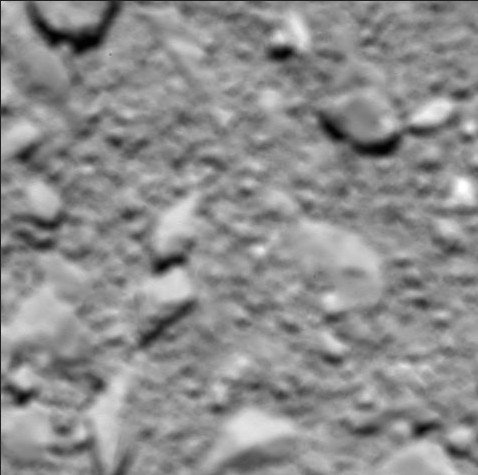
The final view from Rosetta’s OSIRIS wide-angle camera was taken about 65 feet (20 meters) from the comet shortly before impact. The blurry image has a field-of-view stretching about 8 feet (2.4 meters) across, with a resolution of one-fifth of an inch (5 millimeters) per pixel.
Rosetta set down next to an open pit named Deir el-Medina, a feature resembling a sinkhole measuring about 330 feet (100 meters) wide and 165 feet (50 meters) deep. In the final image sequence, the spacecraft turned to look inside the pit, revealing debris strewn across the bottom, material scientists believe fell away from the pit’s frozen walls.
Pits like Deir el-Medina, named for an archaeological site in Egypt, are a likely source for jets of dust and vapor that streamed away from the comet last year.
Link: https://spaceflightnow.com/2016/10/01/rosettas-last-photos-of-comet-67pchuryumov-gerasimenko/